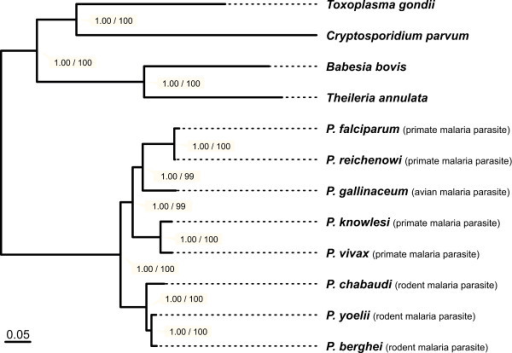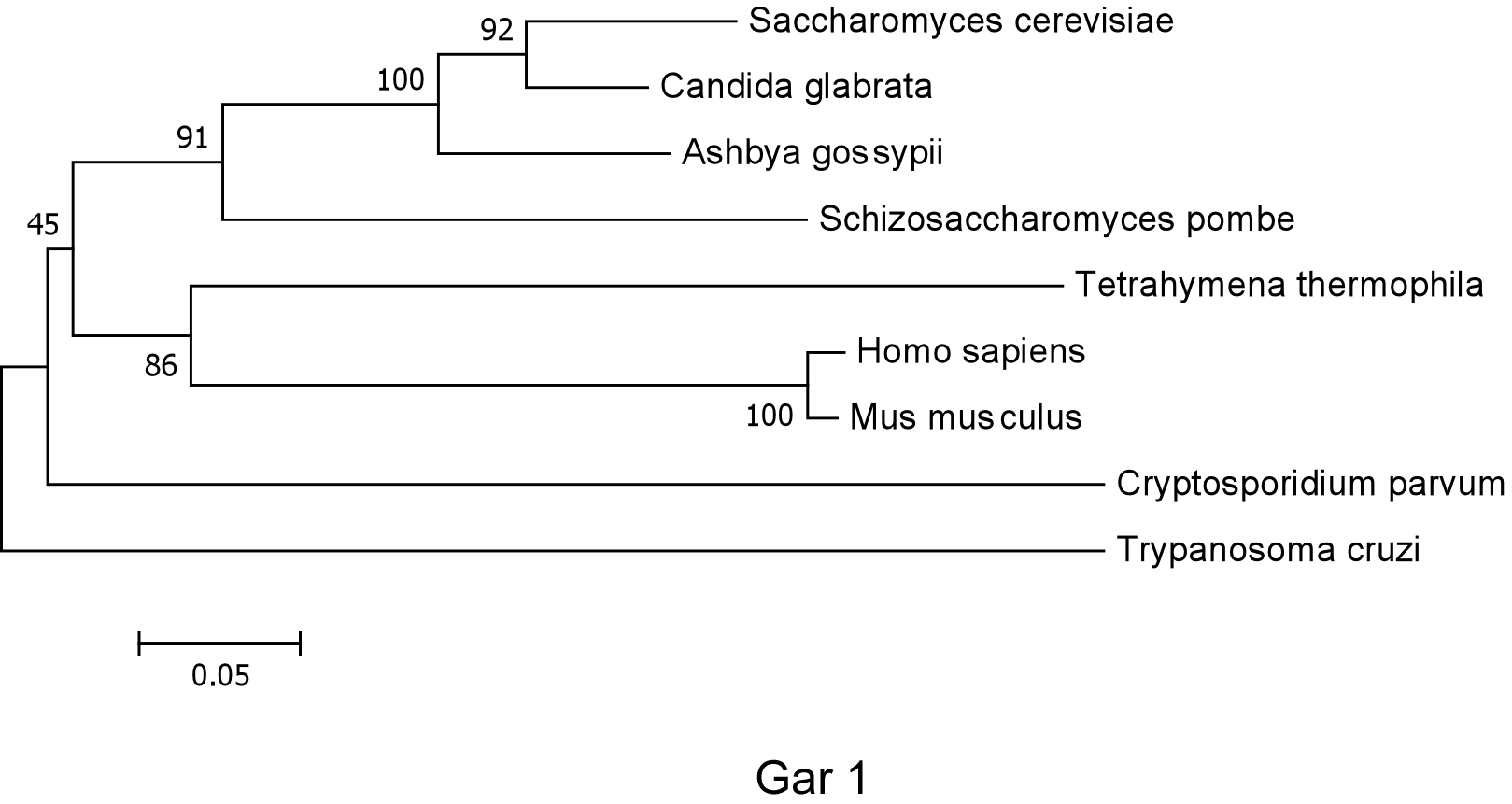
Classification
Kingdom: Protista
Phylum: Apicomplexa
Class: Sporozoa
Order: Eucoccidiida
Family: Cryptosporidiidae
Genus: Cryptosporidium
Species: Cryptosporidium parvum
Domain:
Cryptosporidium parvum is a parasite that belongs to
the Eukarya domain as it has a nucleus, and membrane bound
organelles. It can infect
both humans and animals and cause a disease commonly known as
Cryptosporidiosis.
Kingdom:
Being that C. parvum have animal-like nutrition and
phagocytes to ingest its food, it belongs to the kingdom Protista.
Phylum:

Figure 1
Class:
C. parvum produces both sexually and asexually. It is a
parasitic protozoan and therefore belongs to the class sporozoa.
The sporozoa class contain rarely motile organisms that have
reproducing spores. Many other organisms that cause
malaria also belong to this class.
Order:
The order Eucoccidiida is associated with mammals being the host
of parasites, and C. parvum is just that.

Figure 2
Figure
2 is the second phylogenetic tree. In this particular
tree, it is relating C. parvum to many other Eukaryotic
organisms such as Homo sapiens and Saccharomyces cerecisiae;
which is a type of yeast.
The family Cryptosporidiidae is associated with the disease
Cryptosporidiosis. Being that C. parvum is known to cause this
disease, it belongs to this family.
Cryptosporidium actually means “mystery spore” in English.
G
The genus Cryptosporidium is specifically related to C. parvum as
the life cycle is both sexual and asexual with the produciton of
oocytes. These oocytes develop into different stages inside the
host, particularly in the intestines, which will lead to infection.